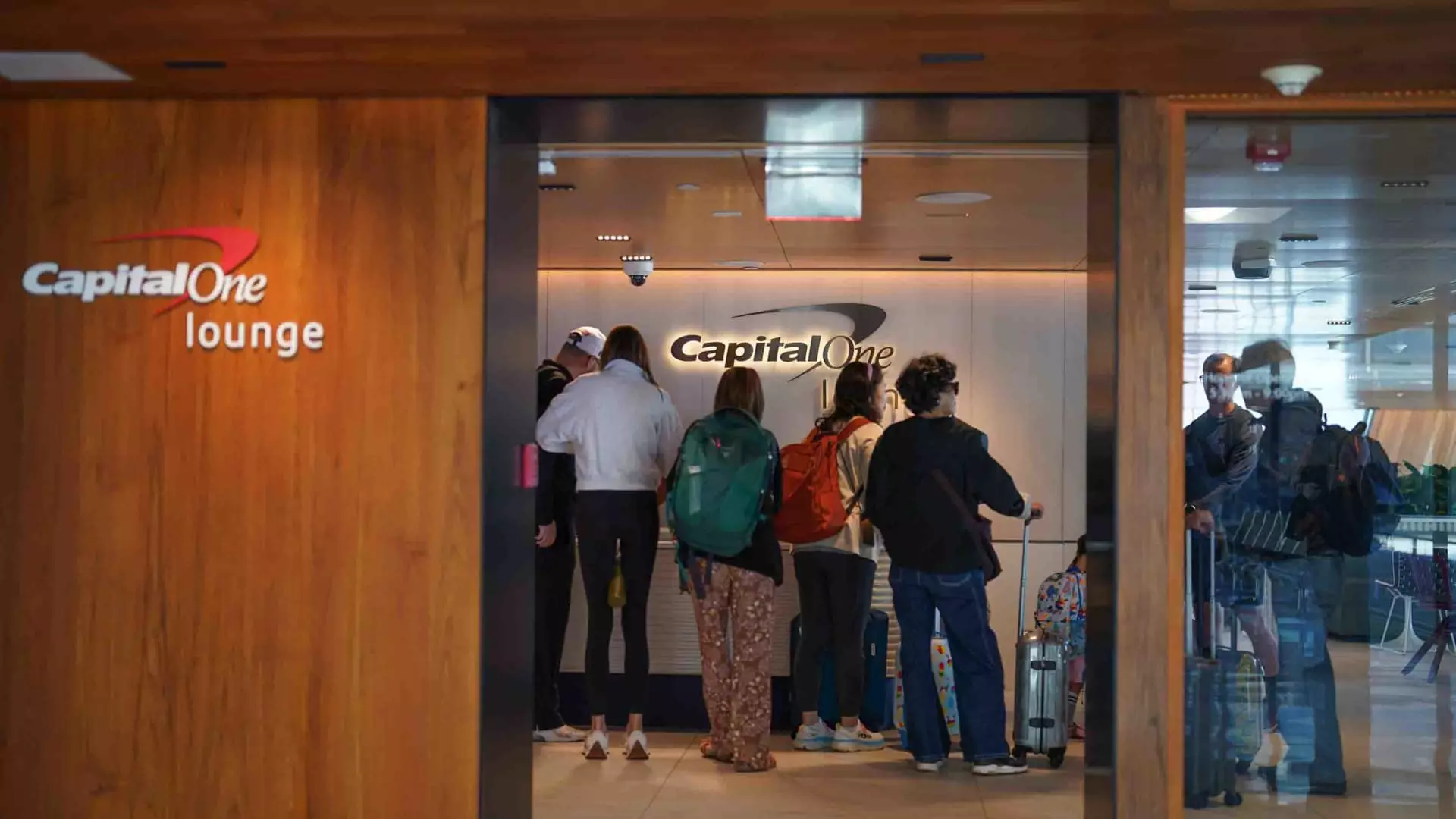The aviation industry has long been associated with the allure of luxury. For many travelers, airport lounges epitomize the height of this experience — an oasis of comfort away from the chaos of busy terminals. However, the recent policy changes by Capital One, specifically regarding access to airport lounges, highlight a dispiriting trend in the world of air travel: exclusivity is getting more expensive, and the illusion of accessibility may soon shatter entirely.
As we see corporations scramble to manage growing demand, the landscape of luxury travel has transformed significantly. Starting February 1, Venture X and Venture X Business cardholders will face new access restrictions to lounges. This decision reflects not only a shift in consumer behavior but also a growing awareness among companies about the sustainability of providing such luxurious experiences to a gradually increasing number of guests. The once-celebrated notion that owning a premium credit card guarantees you a comfortable stay in an airport lounge now comes laced with frustrations and extra fees.
From Free Access to Costly Guests
The changes implemented by Capital One specifically target the ability to bring additional guests into lounges, burdensome fees now obscuring what was previously viewed as an entitlement. Gone are the days when primary cardholders could freely introduce friends and family to this class of travel experience. Now, it seems that every additional access point comes with a cost—a transaction that feels almost punitive. With fees of $125 annually for each additional cardholder and up to $45 for adult guests, the once-simple joys of travel have turned into a conundrum of increasing expenses.
This stark reality scuttles the idea that credit cards are an avenue to more affordable luxury. It sheds light on a troubling trend where exclusivity is devalued through restrictions rather than enhanced through thoughtful enhancements. Although Capital One claims these adjustments are to maintain a high-quality experience, one must wonder: are they more concerned with profit margins than customer satisfaction?
The Exclusivity Dilemma
In a time when consumers expect seamless and enriching travel experiences, companies are paradoxically bolstering exclusivity while also democratizing access to these environments. Cardinal rules have changed, and capitalistic impulses dictate admission policies. While the spending threshold of $75,000 for bringing two complimentary guests aligns closely with other major players like American Express, it raises the critical question of who actually gets to enjoy the luxury these cards offer.
The implications extend well beyond just the wealthy. Travelers on the lower end of the socioeconomic spectrum who might have predicted gaining entry to lounges through strategic spending are now faced with disillusionment. As credit card companies flourish, the average traveler is met with a stark realization: exclusivity has been reserved for those who can afford the escalating costs, leaving even premium cardholders feeling disenfranchised. The soaring fees and restrictions inevitably contribute to a growing divide in the skies—where first-class treatment means jackhammers and unsightly lines become the favoritism of the masses.
The Irony of Demand and Supply
What’s particularly ironic is that the rise in lounge enthusiasm stems from the heightened competition among credit card issuers to enhance their offerings. Capital One’s attempt to diversify lounge access over the years stands testament to this—yet they now find themselves in a paradox where success breeds distress. As lounges become overcrowded, the brand’s intention of providing luxury buckles under the weight of demand.
This phenomenon extends to airline policies as well; Delta Air Lines similarly updated its lounges, insisting on annual access caps to stave off overpopulation. Rather than enhancing the consumer experience, the problem becomes one of control—how much can be charged to ensure a “better” experience while managing unpredictable consumer behavior. The pressure mounts as airlines grapple with the traditional avenues of premium service becoming increasingly scarce.
Consumer Sentiment and Corporate Responsibility
It remains to be seen how customers will react to these policies long-term. Disappointment is palpable among many cardholders who find their once-coveted lounges morphing into crowded waiting rooms rather than elegant retreats. This highlights a critical need for airlines and credit card companies alike to recalibrate their strategies in a landscape consumed by rising demands.
In a market where aspirational living seems to be a chief consumer motivator, businesses must recognize the fine line between exclusivity and accessibility. There’s value in understanding that luxury should not come at the expense of disenfranchising the very customers it aims to serve. If companies continue on this trajectory, they risk alienating a significant section of their customer base—those who once viewed airport lounges as their personal sanctuaries in a turbulent travel industry. The industry, as it stands, is crying out for reform before the dream of luxurious travel bursts into a reality far from its intended splendor.

